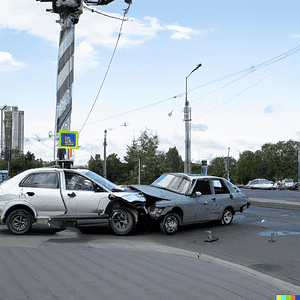Seat belts were invented in the 19th century, but it wasn’t until the 1950s that they made their way into American cars. The first seat belt injury was recorded in 1956. Since then, medical experts have come up with the term “seatbelt syndrome” to describe the distinct pattern of bodily injuries that accompany seatbelt use.
But it doesn’t mean that it has always been gloom when it comes to wearing seat belts. In fact, statistics show that wearing a seat belt can actually save your life in an accident. That explains why the national usage rate for seat belts stands at approximately 90.4% in 2022, up 11% from 2015. Approximately 15,000 lives are saved annually, thanks to seat belts.
The figures further show that at least 2,600 lives would have been saved in 2021 if everyone had buckled up. More than 48% of all passengers killed in 2021 car accidents were not wearing seat belts at the time of the crash.
While most seat belt injuries are relatively minor, some injuries caused by car seat belts can be fatal. This blog post discusses everything you need to know about seat belt injuries and what you should do if you have suffered one.
How Do Seat Belt Injuries Happen?
In most car accidents, vehicles are forced to come to a sudden stop. When this happens, a signal is sent to the seat belt forcing it to pull back, restraining you from moving. This alone is enough to stop you from suffering fatal injuries.
While proper use of seat belts technically lowers your chances of suffering an injury during a crash, the same seat belt may cause an injury to you or your passengers due to a wide range of factors, including:
- The severity of the crash.
- Seat belt malfunction.
- Exceptionally tight restraints.
- Improper placement of the seat belt on the body.
- Manufacturer defect (product liability).

All of these factors can contribute to a life-threatening injury in the event of an auto accident. For instance, a seat belt that malfunctions when it is required to deploy may break upon impact, failing to restrain you or your passengers as intended. This could result in serious injuries.
A high-speed car collision may also lead to a seat belt injury due to the overall impact of the seat belt on your body. In most cases, this will cause abdominal injuries leading to the bruising of internal body organs and other injuries.
Types of Seat Belt Injuries
The good news is that most seat belt injuries are relatively minor and only involve bruises and scrapes. However, the severity of your injuries will typically correspond to the severity of the accident.
Generally, lap belts cause internal injuries to the spinal cord and abdomen region, while shoulder belts cause neck, shoulder, and sternum injuries. Some of the common seatbelt injuries include:
1. Skin Abrasions
Most skin abrasions happen across the lower abdomen area extending slightly diagonally across the neck and chest. The classic “seat belt sign” marked in lacerations or bruises can be a sign of internal injuries in almost 30% of the cases. Abrasion marks in different locations indicate different internal injuries.
Abdominal abrasions can be a sign of soft tissue injuries in the hematoma, bowel perforation, special kinds of spinal fractures, or peritoneum. The worse the bruising, the more severe the injury.

Chest abrasions are mostly associated with sternum, clavicle, or rib fractures and lung injuries, while neck abrasions may be a sign of injured cervical spine, larynx, or carotid artery.
Any appearance of the seat belt sign, no matter how faded it may be, should prompt you to seek immediate medical attention.
2. Abdomen Soft Tissue Injuries
The lower abdomen is home to some of the most vital organs in your body. These include the bladder, appendix, small intestine, large intestine, and kidneys.
As such, any seat belt injury in this region should be considered a serious matter as it could potentially lead to life-threatening internal bleeding.
Common abdominal injuries caused by seat belts include:
- Intestinal injuries.
- Liver and spleen damage.
- Kidney damage.
- Uterine and ovarian rupture.
Any of these injuries can be fatal if not treated immediately. As such, it is important to seek medical attention as soon as possible if you think you may have suffered any abdominal injuries.
3. Neck Injuries
While most seat belt injuries are not fatal, some can be quite serious, especially when they involve the neck and spine.
The good news is that thanks to the design of modern vehicles, the chances of suffering a serious neck injury during a car accident are quite low.
However, there are still some risks, especially if the accident is particularly severe.

The most common type of neck injury caused by a seat belt is called whiplash. This happens when the head is suddenly and violently thrown forward and then backward, causing the neck to snap.
While most cases of whiplash will heal on their own given time, some can be quite severe, leading to long-term neck pain and stiffness.
In rare cases, a neck injury caused by a seat belt can also lead to paralysis. This is usually the result of a broken neck or a crushed spinal cord.
If you think you may have suffered any kind of neck injury, it is important to seek medical attention as soon as possible.
4. Spinal Injuries
Like neck injuries, seat belt injuries to the spine are also quite serious and can lead to long-term problems.
The most common type of spinal injury caused by a seat belt is a fracture. This usually happens in the lower back area where the seat belt would have been positioned.
A seat belt fracture can be quite serious, leading to paralysis if the spinal cord is damaged.
Other types of spinal injuries that a seat belt can cause include:
- Dislocations.
- Herniated discs.
- Spinal cord injuries.
These injuries can be quite serious and may require surgery to correct. As such, it is important to seek medical attention as soon as possible if you think you have suffered any kind of spinal injury.
5. Shoulder Injuries
While most seat belt injuries are not fatal, some can be quite serious, especially when they involve the shoulder.
The most common type of shoulder injury caused by a seat belt is called a subluxation. This happens when the shoulder is suddenly and violently thrown forward, causing the collarbone to pop out of place.
While most cases of subluxation will heal on their own given time, some can be quite severe, leading to long-term shoulder pain and stiffness.

In rare cases, a shoulder injury caused by a seat belt can also lead to paralysis. This is usually the result of a broken neck or a crushed spinal cord.
If you think you may have suffered any kind of shoulder injury, it is important to seek medical attention as soon as possible.
6. Pelvic Injuries
Pelvic injuries caused by seat belts are usually quite serious and can often be fatal. Pelvic fractures are the most common type of injury in this area.
A pelvic fracture is a break in one or more of the bones in the pelvis. This can be a serious injury as it can often lead to life-threatening internal bleeding.
Other types of pelvic injuries that a seat belt can cause include:
- Uterine rupture.
- Ovarian rupture.
- Bladder rupture.
Any of these injuries can be fatal if not treated immediately. As such, it is important to seek medical attention as soon as possible if you think you have suffered any kind of pelvic injury.
What Are the Legal Issues to Seat Belt Injuries?
One of the most common legal issues in seat belt injuries is defective seat belts, meaning that the seat belt failed to perform as expected because of a flaw in its overall design or a simple mistake in its manufacturing process.
Some examples of these kinds of defects include defective latches, webbing that tears too easily, and defective tension detectors.

Another legal issue in seat belt injuries is insufficient seat belts. Some recent lawsuits argue that car manufacturers should be held accountable for not providing sufficient seat belts in the overall design of their cars.
Basically, the plaintiffs in these cases argue that by providing the option of only installing lap belts on some seats, auto manufacturers are making passengers more susceptible to injuries compared to passengers who are fully restrained by both lap and shoulder belts.
Can I File a Lawsuit If I Have Suffered a Seat Belt Injury?
The simple answer is yes. If you have been injured in an auto crash because of a defective seat belt, you may be able to file a product liability lawsuit against the manufacturer of the seat belt.
You will need to prove that the seat belt was defective and that this defect caused your injuries.
If you have been injured in a car accident because you were not properly restrained by a seat belt, you may be able to file a personal injury lawsuit against the driver or the manufacturer of the car.
![]()
You will need to prove that the driver or the manufacturer was negligent in some way and that this negligence led to your injuries.
If you have been injured in a car accident, it is important to seek legal counsel as soon as possible. An experienced car accident lawyer will be able to review your case and help you determine the best course of action.
Do You Have a Case?
Seat belt injuries can be quite serious and often require extensive medical treatment. If you have been injured as a result of not wearing a seat belt, you may be able to file a lawsuit against the driver or manufacturer of the vehicle. It is important to speak with an experienced car accident lawyer near you to determine if you have a case.





